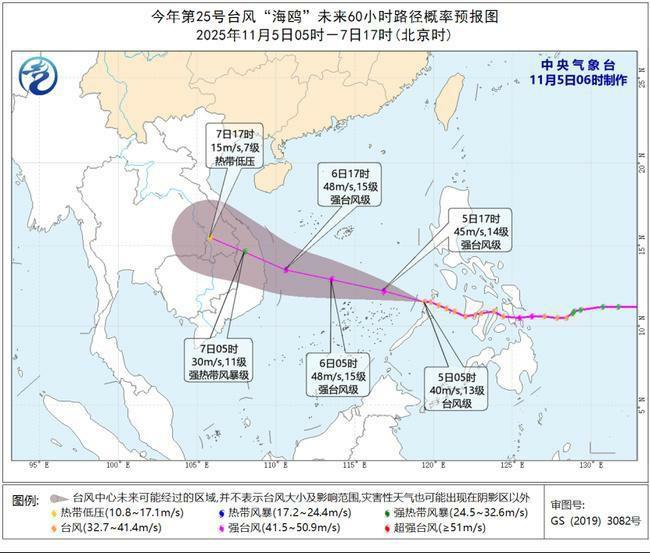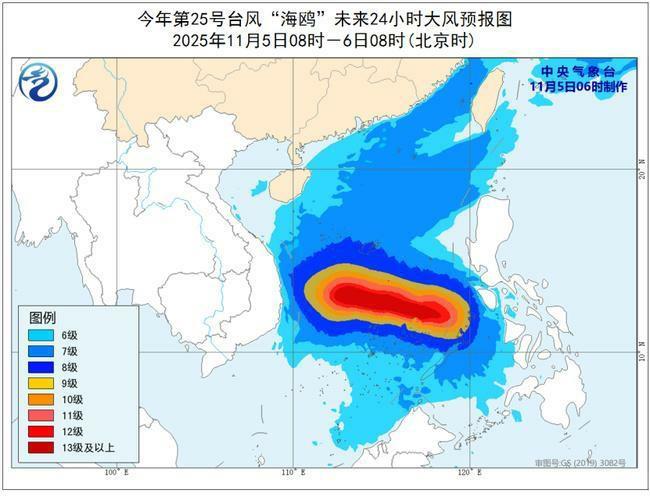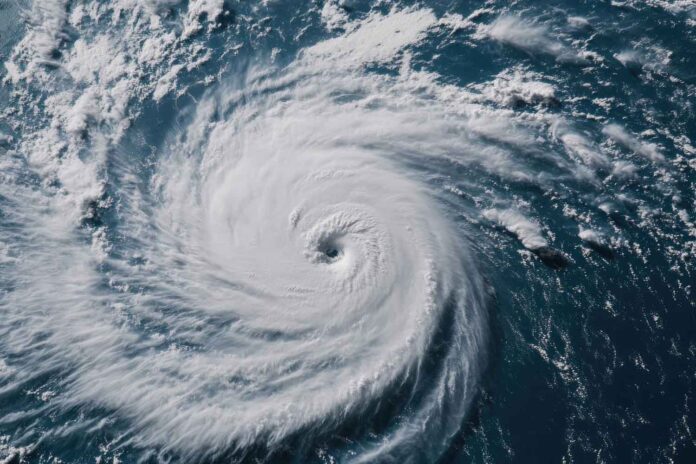Typhoon Kalmaegi (locally referred to as “Seagull”), the 25th named storm of the season, entered the South China Sea early this morning (November 5), gaining strength as it moves northwest toward the central coast of Vietnam.

At 5 a.m. this morning, the storm’s center was located roughly 1,130 kilometers southeast of Quy Nhon in Vietnam’s Binh Dinh province. Kalmaegi was packing maximum sustained winds of 40 meters per second (approx. 145 km/h) near its center, with gusts reaching even higher. The storm’s central pressure measured 960 hPa. Wind fields extended far from the center, with strong winds felt across a wide radius:
- Gale-force winds (level 7): 250–330 km
- Storm-force winds (level 10): 120–150 km
- Hurricane-force winds (level 12): 50 km
Forecast models predict the typhoon will continue on a west-northwest track at 20–25 km/h, strengthening further before making landfall along Vietnam’s central coastline late on November 6. At its peak, Kalmaegi could reach strong typhoon status, with wind speeds between 42–48 m/s (level 14–15). Winds will weaken gradually after landfall.
High Winds and Dangerous Seas Expected

24-hour wind forecast map issued by the China Meteorological Administration (中央气象台) for Typhoon Kalmaegi (海鸥)
Map Overview: The map shows expected wind intensities across affected regions over a 24-hour period as Typhoon Kalmaegi moves across the South China Sea.
From 8 a.m. today through 8 a.m. tomorrow, the storm’s effects, combined with a surge of cold air from the north, are expected to bring rough conditions across much of the majority of the South China Sea.
Precautions and Safety Guidance
Authorities across the region have issued a yellow typhoon alert, and maritime and coastal residents are urged to take precautions.
Kalmaegi Leaves Trail of Destruction in the Philippines

Before entering the South China Sea, Kalmaegi tore through the central Philippines, where it’s locally named Tino, leaving a significant humanitarian crisis in its wake.
At least 46 people have been confirmed dead, including six crew members of a military helicopter that crashed during a disaster relief operation in Mindanao. Flooding across the Visayas region left tens of thousands displaced. In Cebu, rising waters forced many residents to seek refuge on rooftops. Streets turned into rivers, submerging cars and sweeping away debris.
On the island of Homonhon in Eastern Samar, high winds tore roofs off homes and damaged around 300 structures, though no casualties were reported.
Related article: 2025 Hainan (Sanya) Marathon Set for December 28








